- Home
- Prelims
- Mains
- Current Affairs
- Study Materials
- Test Series
 EDITORIALS & ARTICLES
EDITORIALS & ARTICLES
Dec 3, 2021
RAJYA SABHA PASSES DAM SAFETY BILL, WHICH TOOK 34 YEARS TO DRAFT. HERE’S WHY IT IS IMPORTANT
Recently, the Rajya Sabha passed the Dam Safety Bill.
DAM Safety Bill
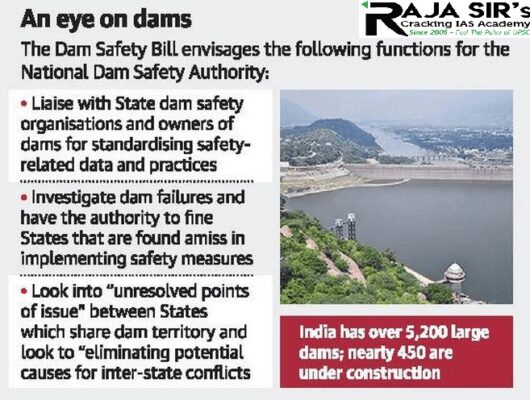


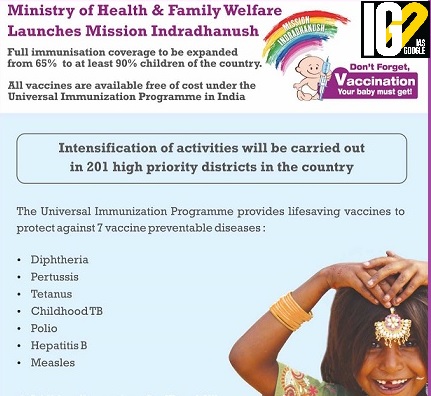

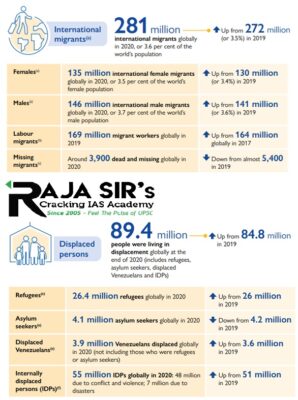
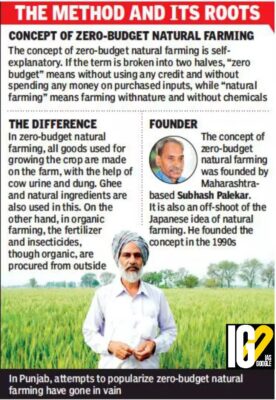
Paramparagat Krishi Vikas Yojana:Schemes in India to promote organic/natural farming:
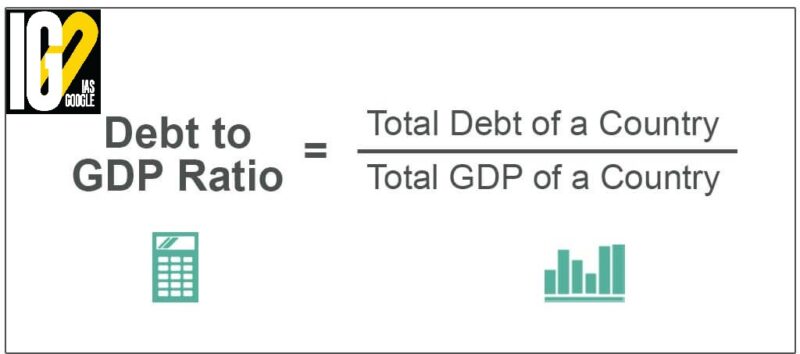

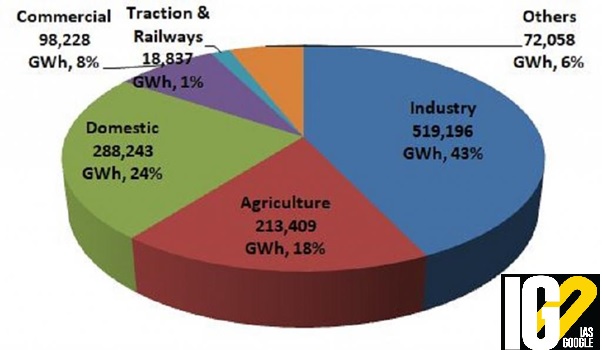

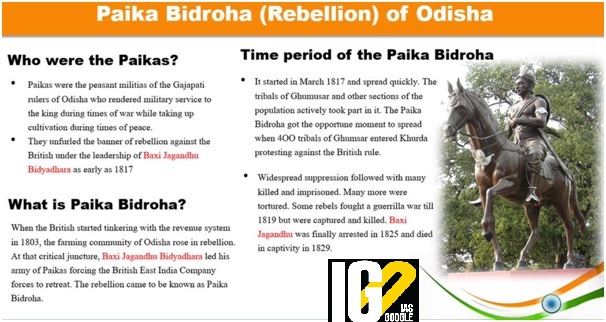

- Aim: To allow for the surveillance, inspection, operation and maintenance of specified dams in India via a regulatory body.
- The Bill seeks to address various issues concerning dam safety:
- It includes regular inspection of dams, emergency action plans, adequate repair and maintenance funds, and instrumentation and the safety manuals.
- The bill proposes the setting up of the following regulatory bodies:
- Chaired by the Central Water Commissioner (CWC).
- Other members of the NCDS:
- will be nominated by the Centre
- will include up to 10 representatives of the Centre, 7 state government representatives, and 3 experts on dam safety.
- State Committee on Dam Safety
- State Dam Safety Organisation
- National Dam Safety Authority
- The four above mentioned bodies will ensure dam safety policies, surveillance, inspection, operation, maintenance and safe functioning of all specified dams.
- In some cases, the NDSA will possess cross jurisdiction.
- For example, if a dam owned by one state is situated in another or crosses multiple states, or if a dam is owned by a central public sector undertaking.
- The dams that come under the scope of the Bill have to be more than 15 metres in height with specified design considerations.
- The Bill applies to all specified dams in the country, which are:
- Dams having height more than 15 metres
- Height between 10 metres to 15 metres with additional conditions like: Reservoir capacity of at least one million cubic meters.
- Length of the top of the dam at least 500 metres.
- Claim by Opposition parties:
- As per law, Entry 17 of the State List allows states to make laws on issues of water supply, irrigation and canals, drainage, water storage and water power.
- Under Entry 56 of the Union List, the Centre’s control of rivers and water is limited only to laws it can make on the regulation of inter-state rivers and river valleys.
- As per the Bill, in the public interest, Union government can regulate on a uniform dam safety procedure for all specified dams.
- However, given Entry 17, it is unclear how Parliament would have the jurisdiction to frame a law for dams on rivers where the river and its valley are entirely within a state.
- Dams having height more than 15 metres

- MOC is a body set up by the Sports Authority of India.
- Aim: To select athletes for financial assistance under the Target Olympic Podium Scheme (TOPS).
- It focuses on selection, exclusion and retention of athletes, coaches, training institutes that can receive TOPS assistance.
- To approve customized programs for athletes chosen under the TOP Scheme.
- To recommend financial disbursement for the customized programs.
- Monitor and review progress of athletes in accordance with the training programs.
- Take decisions on sudden and unanticipated requirements/needs of athletes.
- Communicate regularly with the athletes on their progress, requirements and perspectives.
- Ensure documentation/contractual obligations of beneficiaries.

- TOPS is a flagship program of the Ministry of Youth Affairs and Sports
- Aim: to provide assistance to India’s top athletes.
- Department of Sports will identify athletes who are potential medal winners in 2020 / 2024 Olympics.
- Customized training under reputed coaches at institutes having world-class facilities.
- Participation in international competition.
- Purchase of equipment.
- Services of support staff, Physical Trainer, Sports Psychologist, Mental Trainer and Physiotherapist etc.
- An allowance of Rs. 50,000 per month as an incentive.
- Aim: To reach out the pregnant women and children who missed vaccination under routine immunisation programme in 250 districts across 29 states/UTs.

- Mission Indra Dhanush was launched 2014 by Ministry of Health and Welfare.
- Aim: Expanding immunization coverage to all children across India.
- To cover all those children who are either unvaccinated or partially vaccinated against vaccine preventable diseases.
- Identifying high risk areas by the polio eradication programme. These include populations living in areas such as:
- Urban slums with migration
- Nomads
- Brick kilns
- Construction sites
- Other migrants (fisherman villages, riverine areas with shifting populations etc.)
- Underserved and hard to reach populations (tribal populations)
- Areas with low routine immunization coverage
- Areas with vacant sub-centers
- Areas with missed Routine Immunisation (RI) sessions
- Small villages, hamlets and purbas along with another village for RI sessions.
- Intensified Mission Indra Dhanush 2.0 was launched in 2020.
- Aim: To achieve 90 % vaccination coverage among children below the age of 2 years.
- To immunize children under 2 years of age and pregnant women against eight vaccine-preventable diseases.
- Four immunization rounds were conducted in 173 districts between 2017-18.
- It covered low performing areas in the selected districts and urban areas.
- Special attention was given to unserved/low coverage pockets in sub-centre and urban slums with migratory population.
- It focused on the urban settlements and cities identified under National Urban Health Mission (NUHM).
- Aim: To accelerate the coverage of vaccination among children and pregnant women from February- March 2021 and to boost the RI coverage.
- Beneficiaries from migration areas were of prime focus as they may have missed their vaccine doses during COVID19.
- The campaign focused on achieving 90% Full Immunization Coverage (FIC) in all districts of the country and foster India’s march towards the Sustainable Development Goals.

- It is an international observance promoted by the United Nations.
- Established- 1992
- Objective- To promote the rights of people with disabilities and to raise awareness around their well-being.
- Theme- Leadership and participation of persons with disabilities toward an inclusive, accessible and sustainable post-COVID-19 world.
- Aim- To create equal opportunities for persons with disabilities through the implementation of the 2030 Agenda for Sustainable Development.
- Later, the Convention on the Rights of Persons with Disabilities (CRPD), was also adopted in the year 2006.
- Out of total 70.22 crore male Indian citizens, 5 crore are disabled.
- 18 crore disabled women in India out of 65.46 crore female Indian citizens.
- 3%of Indians with disabilities have movement disabilities
- 9% have hearing impairments
- 8%have visual impairments.
- India is at the first spot in the world with the most visually challenged.
- More than 65%of the overall disabled Indian population lives in rural areas.
- Only 61% of the disabled children aged 5-19 years were getting an education.
- 27%never went to a school.
- Out of the total disabled population, 58%people are literates.
- 62% of disabled males
- 45%of disabled females
- Deendayal Disabled Rehabilitation Scheme (DDRS)
- It is a central sector scheme
- Objective-to provide grant-in-aid to (NGOs) for projects relating to rehabilitation for PwDs
- District Disability Rehabilitation Centers (DDRCs)
- Objective- to facilitate creation of infrastructure and capacity building at district level for awareness, rehabilitation, training and guidance of rehabilitation professionals.
- Assistance to Disabled Persons
- Objective- to assist the needy disabled persons in procuring durable, sophisticated and scientifically manufactured, modern, standard aids and appliances.
- Accessible India Campaign/ Sugamya Bharat Abhiyan
- Objective- to create an enabling and barrier free environment
- Focus- Built Environment, Public Transportation and Information & Communication Technologies.
- Awareness Generation and Publicity Scheme
- To spread awareness about the legal rights of disabled persons.
- Research on Disability Related Technology, Products and Issues
- It was introduced in the year 2015-16.
- It was decided to merge the scheme under the umbrella scheme of SIPDA
- Objectives
- To promote research in prevention and prevalence of disability
- To ensure active and compulsory involvement of PwDs in applied research and product development projects
- Unique Disability ID Project (UDID)
- Objective- to create a National Database for Persons with Disabilities (PwDs)
- In-Service Training and Sensitization of Key Functionaries of Central and State Government, Local Bodies and other Service Providers
- Objective- to train and sensitize Government Local Bodies on new and important issues facing the disability sector.
- Scholarship scheme
- Objective- to empower disabled students to study further in order to earn their livelihood and to find a dignified place in the society.
- It is published every second year by IMO.

- Most of the new displacement is triggered by climate related events and disasters like storms, extreme temperature, drought etc.
- Internal displacement rose to 40.5 million, up from 31.5 million in the year before.
- The number of migrants crossing international borders has grown globally to 281 million in 2020.
- Number of international migrants for 2020 was lower, by around 2 million, than it otherwise would have been without the pandemic.
- Overall increase in remittances is $702 billion in 2020.
- India, China, Mexico, the Philippines and Egypt were the top five remittance recipient countries.
- The remittances were obtained from high-income countries like United States, United Arab Emirates, Saudi Arabia, Switzerland, and Germany.
- Regions with smaller shares of international migrants: Asia (1.8 %), Africa (1.9 %), Latin America and the Caribbean (2.3%).
- Asia experienced the most remarkable growth, followed by Europe, North America and Africa.

- Natural Farming is a chemical-free traditional farming method.
- It is an ecological farming approach established by Masanobu Fukuoka, a Japanese farmer and philosopher.
- It is considered as agro ecology based diversified farming system which integrates crops, trees and livestock with functional biodiversity.
- Natural farming is a system where the laws of nature are applied to agricultural practices.
- This method works along with the natural biodiversity of each farmed area, encouraging the complexity of living organisms, both plants, and animals that shape each particular ecosystem to thrive along with food plants.
- It is largely based on on-farm biomass recycling with major stress on biomass mulching, use of on-farm cow dung-urine formulations; periodic soil aeration and exclusion of all synthetic chemical inputs.
- Increase in production
- In several cases, higher yields per harvest were reported.
- Livestock sustainability
- The integration of livestock in the farming system plays an important role in Natural farming and helps in restoring the ecosystem.
- Eco friendly bio-inputs, such as Jivamrit and Beejamrit, are prepared from cow dung and urine, and other natural products.
- Saving of water
- By working with diverse crops that help each other and cover the soil to prevent unnecessary water loss through evaporation, Natural Farming optimizes the amount of ‘crop per drop
- Improvement in soil health and farmland ecosystem
- The most immediate impact of Natural Farming is on the biology of soil—on microbes and other living organisms such as earthworms.
- Cost- effective farming practices with scope for raising employment and rural development
- Natural farming generates employment on account of natural farming input enterprises, value addition, marketing in local areas, etc
- Reduce dependency
- According to a report, natural farming will reduce dependency on purchased inputs and will help to ease smallholder farmers from credits burden.
- Natural and organic both are chemical free and more or less poison free farming methods.
- Both systems discourage farmers from using any chemical fertilizers, pesticides on plants and in all agricultural practices.
- Both farming methods encourage farmers to use local breeds of seeds, and native varieties of vegetables, grains, pulses and other crops.
- Organic and natural farming methods promote nonchemical and homemade pest control methods.
| Organic Farming | Natural Farming |
| Organic fertilizers and manures like compost, vermicompost, cow dung manure, etc. are used. | No external fertilizers are added to soil or give to plants whatsoever. |
| It requires basic agro practices like plowing, tilting, mixing of manures, weeding, etc. to be performed. | There is no plowing, no tilting of soil and no fertilizers, and no weeding is done |
| It is expensive due to the requirement of bulk manures, and it has an ecological impact on surrounding environments | It is an extremely low-cost farming method, completely moulding with local biodiversity. |
- It is a sub-component of Soil Health Management scheme under National Mission of Sustainable Agriculture.
- It promotes cluster based organic farming with PGS (Participatory Guarantee System) certification.
- Cluster formation, training, certification and marketing are supported under the scheme.
- In India, Natural farming is promoted as Bharatiya Prakritik Krishi Paddhati Programme (BPKP) under centrally sponsored scheme- Paramparagat Krishi Vikas Yojana (PKVY).
- To promote traditional indigenous practices which reduces externally purchased inputs.
- The scheme promotes third party certified organic farming of niche crops of north east region through Farmer Producer Organisations (FPOs) with focus on exports.
- Farmers are given assistance of Rs 25,000 per hectare for three years for organic inputs including organic manure and bio-fertilisers among other inputs.
- Support for formation of FPOs, capacity building, post-harvest infrastructure up to Rs 2 crore are also provided in the scheme.
- Under this scheme, 100 percent assistance is provided to state government, government agencies for setting up of mechanised fruit and vegetable market, waste and agro waste compost production unit.
- Under the Mission, financial assistance at 50 percent subsidy to the tune of Rs. 300 per hectare is being provided for different components including bio-fertilisers and supply of Rhizobium culture.
- Under NFSM, financial assistance is provided for promotion of bio-fertiliser (Rhizobium/PSB) at 50 percent of the cost limited to Rs 300 per hectare.
- The report provides information, analysis and an assessment of the finances of State governments for 2021-22 against the backdrop of actual and revised (or provisional accounts) outcomes for 2019-20 and 2020-21, respectively.

- The combined debt-to-GDP ratio of states is expected to remain at 31 % by end-March 2022.
- The State government’s interest payments and debt servicing during the current financial year is pegged higher than the revised estimates of the previous financial year.
- For 2021-22, States have budgeted their consolidated gross fiscal deficit (GFD) to gross domestic product (GDP) ratio at 3.7 %, a marked improvement from the level of 4.7 %in the revised estimates for 2020-21.
- States could repair their finances on the back of a recovery in revenue collection and greater certainty on the GST compensation cess.
- States should channelise expenditure to sectors that crowd in private investments and optimise multiplier effects that boost output, employment and productivity.
- The multiplier effect refers to the proportional amount of increase, or decrease, in final income that results from an injection, or withdrawal, of capital.
- State governments need to take credible steps to address debt sustainability concerns.
- A country's public debt is considered sustainable if the government is able to meet all of its current and future payment obligations without exceptional financial assistance or going into default.
- States should increase the functional autonomy of the civic bodies, strengthen their governance structure and empower them financially to build resilience.
- State governments should set up State Finance Commissions (SFC) at regular intervals, in line with the recommendations of 15th Finance Commission.
- States may also urge rural and urban local bodies to make audited accounts available online in a timely manner to access grants.

- Allow lower fuel stocks during the periods of low demand and mandate larger inventories during high-demand seasons.
- Mandates the coal stock of 17 days at pit head stations and 26 days at non-pit head stations to be maintained by power plants from February to June every year.
-
- Non-pit head plants: Power plants where the coal mine is more than 1,500 km away.
- The new methodology implies that power plants which have lower utilisation rates will need to stock more coal than they did earlier.
- Need: To avoid repeat of the recent coal crisis when a significant capacity of generating station had to be shut down due to low coal stocks.
-
- Penalty for power plants for keeping lower than prescribed fuel stocks.
- Daily coal requirement at the power plant at any given day will be calculated based on 85% plant load factor (PLF).
- It is a statutory organisation constituted under Electricity Supply Act 1948, which has been superseded by section 70(1) of the Electricity Act 2003.
- Aim: To ensure reliable 24×7 power supply of adequate quality to all consumers in the country.
- It advises the government on policy matters and formulates plans for the development of electricity systems.
- It prescribes the standards on matters such as construction of electrical plants, electric lines and connectivity to the grid, installation and operation of meters and safety and grid standards
- It is responsible for concurrence of hydro power development schemes of central, state and private sectors.
- It helps in promoting the integrated operations of the regional power grids and the evolution of a national grid.
- It advises central government, state governments and regulatory commissions on all technical matters relating to generation, transmission and distribution of electricity.
- Its responsibility also includes reliable data collection/ management/dissemination of the power sector.

- National Action Plan on Climate Change (NAPCC) has proved ineffective.
- Cause-Non-transparency, loose targets and overlooked deadlines.
- Thermal power plants had reduced just 1-2 % of overall carbon dioxide emissions emitted by them.
- Industrial sector consumes 43% of overall consumption of energy, which is the most energy consumption sector of India.
- Carbon dioxide (CO2) emissions has been reduced in PAT cycle 1 and 2.
- The total emission reduction from Thermal Power Plants (TPPs) is 24.85 million tonnes of oil.
- Launched- 2008
- Aim- to check the increasing energy consumption of industries and related carbon emissions.
- National Solar Mission
- Objective- to promote solar power and reduce dependency on the traditional power sources.
- Kisan Urja Suraksha Evam Uthhan Mahabhiyan (KUSUM) was launched under this scheme.
- Aimed to produce 20,000 Megawatts of solar power in three phases of (2010-2013); (2013-2017); and (2017-2022).
- National Mission for Enhanced Energy Efficiency
- Implemented by- Union Ministry of Power and Bureau of Energy Efficiency.
- Objective- To promote the use and adoption of energy efficient equipment’s.
- The Mission has four components:
- Perform Achieve and Trade (PAT)
- Energy Efficiency Financing Platform
- Market Transformation for Energy Efficiency (MTEE)
- Framework For Energy Efficiency Economic Development
- National Mission on Sustainable Habitat
- Objective- to make cities sustainable through improvements in energy efficiency in buildings, management of solid waste & shift to public transport.
- National Water Mission
- Objective- To focus on conservation of water and minimizing wastage
- To ensure equitable distribution among the state.
- National Mission for Sustaining the Himalayan Ecosystem
- Objective- to assess the health of Himalayan Ecosystem.
- National Mission for a Green India
- Objective- to protect, restore and enhance India's diminishing forest cover.
- National Mission for Sustainable Agriculture
- Objective-To make agriculture more productive, sustainable, remunerative and climate resilient.
- National Mission on Strategic Knowledge for Climate Change
- Objective- to build a dynamic and vibrant knowledge system that informs and supports effectively to climate change challenges.

- It is a flagship programme and market-based mechanism.
- Launched by- Bureau of Energy Efficiency (BEE) in 2012
- Aim- to enhance the cost effectiveness in improving the Energy Efficiency in Energy Intensive industries.
- The scheme has set energy efficiency targets for industries.
- It refers to the calculation of Specific Energy Consumption (SEC) in the baseline year and projected SEC in the target year.
- Industries that participate in this scheme are called designated consumers (DC)
- Energy savings certificates (ESCerts) are issued for achieving the targets.
- Non-achievers have to buy the ESCerts after the three years for compliance.
- PAT covered about 13 energy-intensive sectors.
- The government shortlists industries and restricts the amount of energy within a time limit of three years. These three years of time are called one PAT cycle.
- Industries that participate in this scheme are called designated consumers (DC).
- Those that overachieve their targets are issued energy savings certificates (ESCerts)that can be traded with industries that have not achieved their targets.
- It included 478 DCs from eight different sectors.
- The overall energy saving targets for PAT Cycle I was 6.686 million Tonne of Oil Equivalent (MTOE) by the end of 2014-15.
- 621 DCs from 11 energy-intensive sectors were included.
- Aim-to achieve an overall energy consumption reduction of 8.869 MTOE.
- 116 DCs from eight sectors were part of it.
- Aim- to achieve an overall energy consumption reduction of 1.06 MTOE.
- 109 DCs with a total reduction target of 0.6998 MTOE was notified.
- 110 DCs have been notified for targeted energy savings of 0.5130 MTOE.
- 135 DCs are selected with a target of 1.277 MTOE.

- Paika rebellion is also called the Paika Bidroha.
- It was an armed rebellion against Company rule in India in 1817.
- The Paikas were the traditional militia of Odisha.
- The Paikas were organised into three ranks distinguished by their occupation and the weapons they wielded.
- The origins of the Paika Rebellion lay in several social, economic and political causes.
- Odisha had four ports for trading, with the networks in the region involving millions of traders
- But East India Company, to protect their monopolies has closed these ports which alienates large swathes of the local population.
- The Paikas were also subjected to extortion by the Company administration and its servants.
- The spark was lighted by the arrival of a body of Khonds from Gumsur into the Khurda territory in March 1817.
- The Paika Rebellion was led by Bakshi Jagabandhu.
- The former Bakshi or commander of the forces of the Raja of Khurda.
- Raja Mukunda Deva, the last King of Khurda was another leader of the Paika rebels.
- Effects of Bidroh:
- The rebels involved were awarded sentences of death, long-term imprisonment.
- A commission was appointed by the British officials to enquire into the rebellion and the guilties were brutally punished.
- Odias was employed by the government and entrusted with important tasks.
- This enables the indigenous people to develop a relationship with the British authorities through these employees.
- The price of salt was reduced and more salt was made readily available to the populace.
- Reduced revenue burden on local zamindars
- The extortionist land revenue policy of the Company caused resentment among zamindars and peasants alike.









 Latest News
Latest News General Studies
General Studies